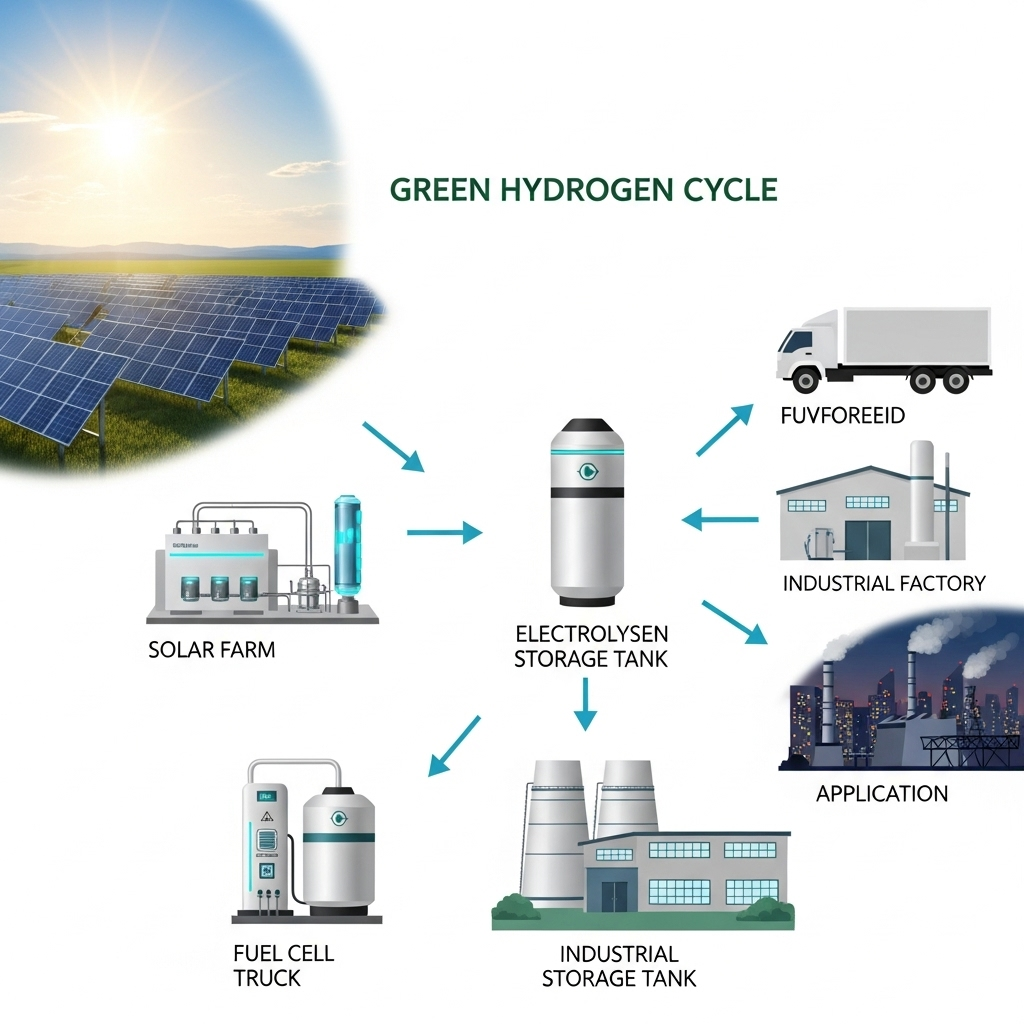The global shift toward clean energy is not happening by chance. It is propelled by a framework of government policies known as renewable energy targets and mandates. These regulations are the primary drivers behind the rapid expansion of solar power and energy storage. For anyone considering a solar investment, from homeowners to business operators, grasping these policies is the first step toward making a smart decision.
At their core, these policies fall into two main categories. Renewable energy targets are typically aspirational goals set by a country or state to signal a long-term commitment to clean energy. Renewable energy mandates, on the other hand, are legally binding requirements that compel utilities and other entities to take specific actions. Both play a distinct but complementary part in building a sustainable energy future.
Understanding the Policy Landscape: Targets vs. Mandates
Energy policies create the market conditions for renewable technologies to thrive. They provide the certainty that manufacturers, developers, and consumers need to invest in clean energy solutions. The distinction between a target and a mandate is important, as it determines the pace and certainty of market growth.
What Are Renewable Energy Targets?
Renewable energy targets are public commitments to achieve a certain level of renewable energy generation by a specific date. For instance, a government might announce a goal of "40% renewable electricity by 2035." These targets are not always legally enforceable but serve as powerful signals to the market. They encourage private investment, spur innovation, and align national priorities. International agreements often set the stage for these national goals. A prime example is the European Union's Renewable Energy Directive (RED II), which sets ambitious goals for its member states. You can learn more about what this means for project developers in EU RED II to 2030: What It Signals for Solar Developers.
The Power of Renewable Portfolio Standards (RPS)
A Renewable Portfolio Standard (RPS) is one of the most effective types of mandates. An RPS requires that utility companies source a minimum percentage of the electricity they sell from renewable resources. This creates a guaranteed demand for clean energy. As utilities work to meet their obligations, they sign long-term contracts for wind, solar, and other renewable projects. This mechanism is a major force behind the growth of large-scale power generation. The effectiveness of an RPS compared to other incentive models is a frequent topic of discussion, as detailed in RPS vs Feed-in Tariffs: Which Drives Utility-Scale Solar?.
Many RPS policies include "carve-outs," which mandate a specific portion of the renewable energy must come from a particular technology, like solar. These carve-outs ensure that diverse renewable technologies are developed. The specifics of these policies can significantly affect the viability of combined solar and storage projects, a topic covered in What Do State RPS Carve-Outs Mean for Solar+Storage?.
Solar Mandates and Other Direct Regulations
Beyond broad RPS policies, some jurisdictions implement direct solar mandates. A common example is a rule requiring all new residential or commercial buildings to include a solar PV system. These regulations directly boost the rooftop solar market and create consistent work for installers. While effective, implementing such mandates requires careful planning to avoid common issues. For a closer look at potential challenges, consider reviewing 7 Policy Pitfalls That Derail Solar Mandate Compliance.
The Crucial Role of Solar and Energy Storage in Meeting Goals
Targets and mandates set the stage, but technology does the work. Solar power and energy storage are the two pillars that make achieving these clean energy goals possible. They work together to provide clean, reliable, and on-demand power.
Solar Power: The Engine of Renewable Generation
Solar energy is often at the center of renewable energy policy for several reasons. It is highly scalable, fitting on a small cabin or across a massive desert. Its costs have fallen dramatically, making it one of the most affordable sources of new electricity generation. Its versatility allows it to be deployed in utility-scale farms, on commercial rooftops, and in residential off-grid solar applications. Policies are therefore designed to accelerate its adoption, and forecasting this growth is a key activity for grid planners. You can get a sense of future trends by reading the 2025 Outlook: RPS Trajectories, Solar Capacity and Storage.
Energy Storage: The Key to Reliability and Grid Stability
Solar panels generate power when the sun is shining. Energy storage solves the challenge of what happens when it is not. Energy Storage Systems (ESS) capture excess solar energy produced during the day and store it for use at night or during cloudy periods. This capability transforms intermittent solar power into a firm, dispatchable resource.
Modern home energy storage systems often use high-performance Lithium Iron Phosphate (LiFePO4) batteries. With years of experience in the solar industry, we have seen firsthand that LiFePO4 chemistry offers a superior combination of safety, long cycle life, and reliability, making it ideal for residential and commercial applications. These batteries are the core of our integrated ESS solutions, which combine the battery, a hybrid solar inverter, and controls into a single, seamless unit. For a detailed breakdown of how different storage technologies perform, our Ultimate Reference on Solar Storage Performance provides in-depth data and comparisons to help you choose the right system.
The Synergy of Solar + Storage for RPS Compliance
Combining solar with energy storage creates a powerful asset for meeting clean energy mandates. A solar-plus-storage system can provide power to the grid during peak demand hours in the evening, when it is most valuable. This helps utilities stabilize the grid and meet their RPS obligations more efficiently. This synergy is a central theme in The Ultimate Guide to RPS Compliance for Solar+Storage. In some applications, these combined systems can form independent microgrids, providing resilience for entire communities and helping to exceed policy targets, as shown in this Case Study: Beating 2030 RPS Targets with LiFePO4 Microgrids.
Navigating the Practicalities: From Policy to Project
Understanding the policies is the first step. The next is navigating the practical steps to get a project built and operational. This involves technical, financial, and administrative considerations that can make or break a project.
Grid Interconnection: The Unseen Hurdle
Connecting a solar and storage system to the electric grid is a complex process known as interconnection. According to the U.S. Department of Energy, outdated interconnection rules in many states can cause significant delays and add unnecessary costs. These rules were often written before energy storage was a common technology. Modernizing these regulations is critical to streamline project approvals and lower costs. Clear rules provide greater certainty for developers and utilities alike. Learning about the regulations that can speed up this process is valuable, as explained in Grid Interconnection Rules That Accelerate RPS Delivery. Our integrated systems, including our off-grid solar solutions and home energy storage systems, are designed with compatibility in mind, using advanced solar inverters to simplify the connection process.
Financial Incentives and Policy Alignment
Renewable energy mandates create a market for financial incentives. These can include federal tax credits, state rebates, and performance-based payments like Solar Renewable Energy Certificates (SRECs). Securing project financing often depends on the ability to capture these incentives effectively. A well-structured project will align its financial model with available policy support, a strategy outlined in Unlock Incentives: Align ESS Financing with Solar Mandates. It is a common misconception that mandates automatically drive up electricity prices. In reality, well-designed policies can lower overall system costs, a point clarified in Mandates Mean Higher Costs? RPS Myths for Solar Debunked.
Developing a Future-Proof Energy Strategy
Energy policies are not static; they evolve. A successful long-term energy strategy requires planning for future regulatory changes. This means mapping current and projected mandates to your personal or business energy roadmap. This forward-looking approach is detailed in How to Map Solar Capacity Mandates to Your ESS Roadmap. It is also wise to keep an eye on emerging technologies and policies, such as those related to green hydrogen, which could influence future solar regulations. For more on this, see Will Emerging Green Hydrogen Targets Reshape Solar RPS?.
A Global Perspective on Clean Energy Goals
While the principles are similar, the application of renewable energy policy varies significantly around the world. Different economic conditions, political priorities, and resource availability lead to diverse strategies for encouraging clean energy.
Comparing Regional Approaches
The United States relies heavily on a state-by-state RPS model, while the European Union sets binding targets for the entire bloc. Meanwhile, developing nations may focus on policies that attract international investment to build their renewable infrastructure from the ground up. The table below offers a simplified comparison.
| Region | Key Policy Framework | Primary Focus | Example Target |
|---|---|---|---|
| United States | State-level Renewable Portfolio Standards (RPS) | Utility procurement mandates, tax incentives | Varies by state (e.g., California: 100% clean electricity by 2045) |
| European Union | Renewable Energy Directive (RED II) | Binding EU-wide targets, emissions reduction | At least 42.5% renewable energy share by 2030 |
| Morocco | National Energy Strategy | Attracting private investment for large-scale projects | 52% of installed electrical capacity from renewables by 2030 |
The Role of International Bodies
Organizations like the International Energy Agency (IEA) and the International Renewable Energy Agency (IRENA) play a vital part in the global energy transition. They conduct authoritative research, provide policy recommendations, and collect data that helps governments make informed decisions. Reports like the IEA's Solar Energy Perspectives have been instrumental in outlining pathways for solar deployment for over a decade. These bodies help create a common knowledge base for policymakers worldwide.
Building Your Path to Energy Independence
Renewable energy targets and mandates are more than just government documents. They are the blueprints for our future energy system. They create the stability and incentives necessary for technologies like solar and storage to become mainstream. Understanding how these policies work is the first step toward making an informed decision about your own energy future.
With extensive experience in the solar and energy storage industry, we specialize in developing reliable and scalable solutions. From high-performance LiFePO4 batteries to fully integrated home energy storage systems and off-grid solar kits, our focus is on providing the tools you need to navigate this changing landscape. By taking control of your energy production and storage, you can gain protection from rising utility costs and achieve greater energy independence.
Disclaimer: This information is for educational purposes only and does not constitute legal or financial advice. Energy policies and incentives change frequently. Please consult with a qualified professional for advice specific to your situation.





Leave a comment
All comments are moderated before being published.
This site is protected by hCaptcha and the hCaptcha Privacy Policy and Terms of Service apply.